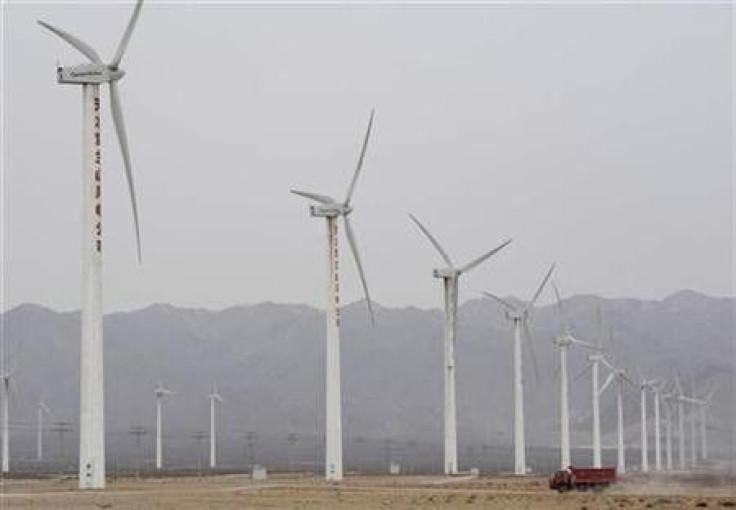Interior Department Announces ‘Solar Energy Zones’ for Development in Western States

The Obama administration on Thursday identified 17 sites in six Western states as ideal candidates for solar energy projects on public lands, part of the administration's push for solar power despite the recent bankruptcy of the federally-funded solar panel maker, Solyndra.
About 285,000 acres of desert land across California, Nevada, Colorado, Utah, Arizona and New Mexico have been classified as solar energy zones, and have been targeted for the development of large, utility-scale solar projects on public lands that will reportedly generate thousands of megawatts of electricity. In a statement, Interior Secretary Ken Salazar said those areas were chosen because they had the highest potential for solar development with the fewest environmental, cultural and historical conflicts.
Salazar said the latest solar energy zones improve on a draft of the Programmatic Environmental Impact Statement for Solar Energy Development (Solar PEIS) released in December, which initially identified about two dozen areas for development, comprising approximately 667,000 acres.
Smarter Solar Projects
This Solar PEIS establishes for the first time a blueprint for landscape-level planning that will help facilitate smarter siting of solar energy projects. Today's announcement lays a solid foundation for an enduring, sustainable solar energy future for our nation, Salazar said.
Salazar said the agency developed a supplement on the original plan after receiving more than 80,000 comments on the draft Solar PEIS.
In a conference call with members of the press, Salazar said the solar energy zones are intended to make some sections of the desert undesirable for solar prospecting by identifying areas that have already satisfied environmental requirements, therefore resulting in expedited permitting.
These 445 square miles of zones are ... where development will be driven, Salazar said.
The plan also opens an additional 20 million acres of the Mojave Desert for development, a move that some conservation groups contended could threaten scores of endangered plants and animals that will not be capable of adapting to the change.
The plan has also emitted a tepid response from some solar energy officials, who warn that the solar energy zone approach may complicate efforts to build large-scale solar projects on federal land.
Rhone Resch, the president and CEO of the Solar Energy Industries Association, told The Associated Press he had some significant areas of concern about the plan, explaining that flexibility in both project siting and access to transmission are crucial to securing financing for and the development of utility-scale solar power plants.
New Rules' Intent: Produce Stronger Projects
Deputy Interior Secretary David J. Hayes said the new rules will allow for the creation of additional solar energy zone and would not block project development outside of those areas. Hayes, according to The Washington Post, said developers will have to make a stronger case to win a federal permit.
The department has reportedly received 79 applications for solar projects on public lands pending and hopes to approve up to 14 of them in 2012.
The Post reports that federal permitting for solar development has moved sluggishly. The George W. Bush administration did not issue any permits; although the Obama administration has approved 22 projects on public land -- 13 of which are solar -- none of them are operating yet.
When those projects are up and running, the Department of Interior expects the 22 renewable energy projects, the rest of which consist of wind and geothermal projects, will create a combined 8,600 construction and operation jobs and produce nearly 5,000 megawatts of electricity, enough to power about 1.5 million homes.
In a statement, U.S. Energy Secretary Steven Chu said tapping the vast potential of solar resources in the West will contribute to the Obama administration's goal of repositioning the U.S. as a global leader in clean energy.
Advancing the deployment of utility-scale solar projects will not only help provide clean power to local utilities, it will also drive down the cost of solar energy and create American jobs in the rapidly-growing clean energy economy, he said.
The administration's push for solar energy development has been criticized by some in the wake of the bankruptcy of the California-based solar panel maker, Solyndra. The company filed for bankruptcy protection in late August and laid off 1,100 employees after receiving a half-billion dollar federal loan in 2009.
© Copyright IBTimes 2024. All rights reserved.











